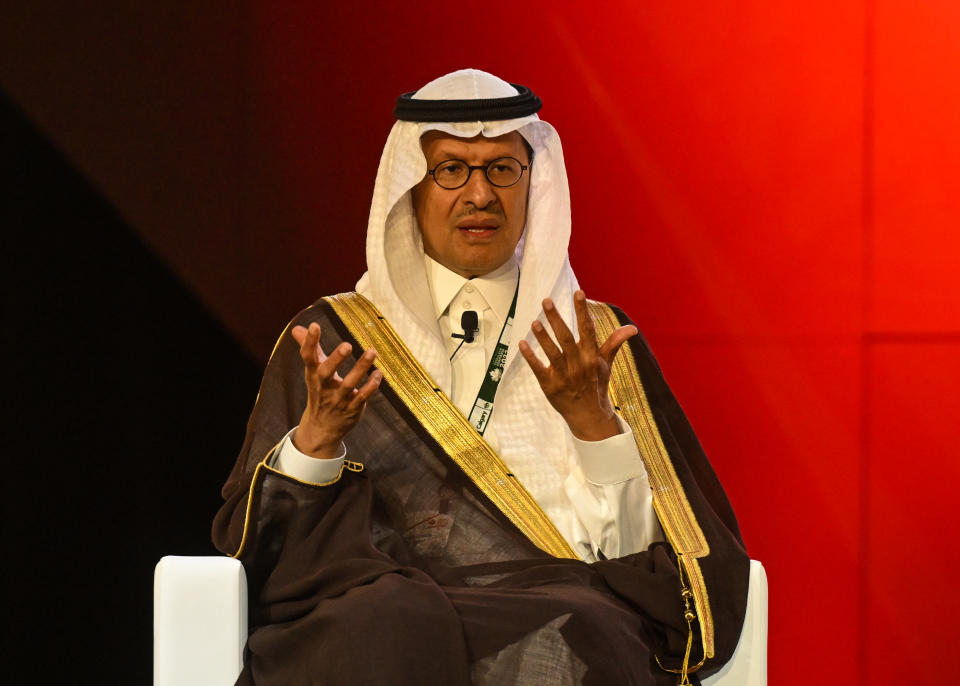Oil falls more than 2% on report Saudi Arabia vows to bring barrels back even if prices fall

Oil prices sank more than 2% on Thursday after the Financial Times reported Saudi Arabia is determined to start unwinding voluntary production cuts starting Dec. 1, even if it leads to a "prolonged period" of lower crude prices.
The report, which cited people familiar with Saudi Arabia's thinking, said the country is ready to abandon its unofficial price target of $100 a barrel for crude in order to regain market share.
On Thursday, West Texas Intermediate (CL=F) fell more than 2% to trade below $68 per barrel. Brent (BZ=F), the international benchmark price, also dropped as much as 3% to hover around $71 per barrel.
"I am not surprised by the reaction in the market because the OPEC 'put' has been protecting downside since they have kept barrels off the market," Rebecca Babin, CIBC Private Wealth senior energy trader, told Yahoo Finance on Thursday.
While the Organization of the Petroleum Exporting Countries, which is comprised of 12 of the world’s major oil-exporting nations including Saudi Arabia, has been cutting output since 2022, the US and other oil-producing nations have been increasing theirs. Last year, the US produced record amounts of oil and gas.
However, Babin questions whether OPEC is ready to do a full pivot to regain market share, since despite the group's pledges, some member countries have produced above their quotas this year.
"I think this decision is more about recalibrating who is carrying the burden of OPEC production cuts," said Babin.
"My sense is the OPEC wants the countries that have been overproducing to compensate for overproduction while allowing those who have complied ability to bring barrels back," she added.
Earlier this month, OPEC+, which includes OPEC members and non-members like Russia, Kazakhstan, and Sudan, delayed the unwinding of some of its voluntary cuts scheduled for October as oil prices fell.
Wall Street analysts had already been lowering their price target for Brent based on the expectation of growing supply and weak demand.
In September, Morgan Stanley cut its Brent (BZ=F) forecast for the second time in a month, citing recent price declines that signal the risk of "considerable demand weakness."
The analysts predict Brent will average $75 per barrel in the fourth quarter of this year, $5 lower than the prior downwardly revised forecast of $80 issued in late August.
JPMorgan recently cut its fourth quarter forecast from $85 to $80 per barrel, citing "oil’s large underperformance" in August.
Earlier in September, oil dropped to its lowest level since 2021, but it rallied last week off those lows.
Year to date, WTI is down 3%, while Brent is down roughly 4%.
Ines Ferre is a senior business reporter for Yahoo Finance. Follow her on X at @ines_ferre.
Click here for the latest stock market news and in-depth analysis, including events that move stocks
Read the latest financial and business news from Yahoo Finance
Breaking news
See all






